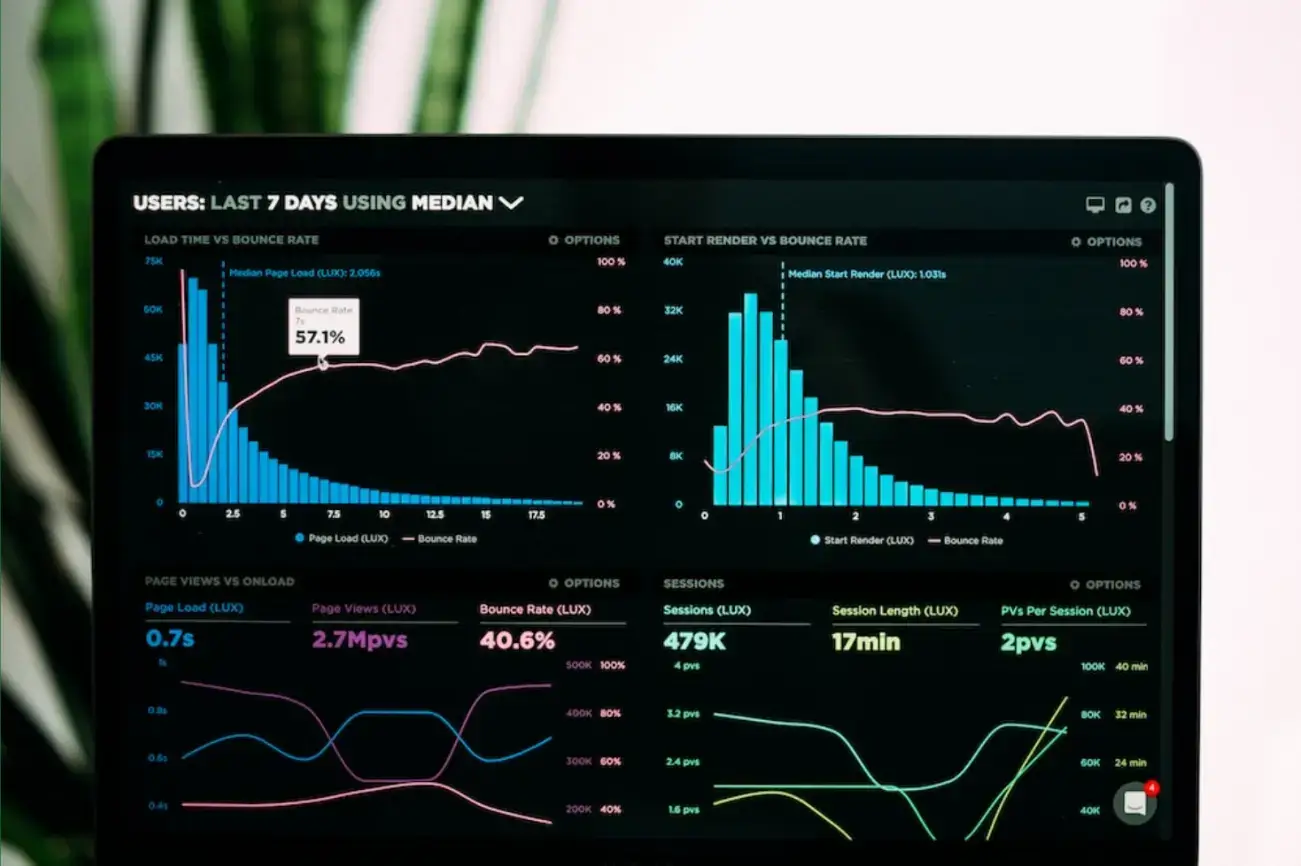When setting up an eCommerce business, it might seem easy to just choose a single platform that contains all of your frontend and backend solutions.
The main appeal of this is that it allows you to concentrate on getting your business fully up and running, as you’ll be able to rely on off-the-shelf functionality across all of your digital operations.
However, many businesses soon find that this traditional model of eCommerce technology has significant downsides.
Using one monolithic architecture means that your operations will lack agility: you can’t easily scale up one element of your operations, for instance.
That’s why composable commerce—also known as headless commerce—is becoming increasingly popular with fast-growing eCommerce companies.
This is where you take a modular approach to your digital infrastructure and have total control over the various components you want to make up your eCommerce platform.
Using a composable commerce approach, you can build a tech stack that is truly tailored to your company’s needs. Keep on reading to find out more.
Article Shortcuts:

Free to use image sourced from Unsplash
What is Composable Commerce?
Traditionally, eCommerce companies would use one single vendor for all of their digital infrastructure needs.
This would mean that their frontend and backend services would be provided under one monolithic architecture; questions such as ‘which API should I use’ and ‘what are modern applications’ would thus be answered by a third-party supplier.
That sounds nice and simple, right? Surely, using one provider and an all-in-one platform for everything related to your site will make running your eCommerce business easier?
Well, that might be true at the start of your company’s journey. However, it can be incredibly difficult to customize or update applications on a monolithic digital platform.
That’s because each application is interlinked, meaning that the entire system should be updated and retested every time you want to change just one element of your digital architecture.
This lack of adaptability can place serious limits on ambitions and business capabilities for companies looking to thrive in the fast-paced and constantly evolving world of eCommerce.
As well as this, using the necessary integrations can rack up significant costs.
That’s why composable commerce is becoming the next big thing in eCommerce.
Think of composable architecture as the opposite of the traditional approach to eCommerce.
Rather than having all of your applications part of one overarching monolith, it takes a modular approach: each part of your tech stack is individually tailored so that your total digital architecture is perfectly designed for your company’s specific demands.
This means you can try different modular technologies without worrying about your single provider’s licensing restrictions.
For example, you see new personalized AI advancements in a different CRM—you can simply plug this CRM into your architecture and see how well it works in your eCommerce company.
Ultimately, composable commerce architecture is all about differentiating your backend services to create the best possible frontend experience for your customers—you use independent services for different parts of your tech stack, resulting in a digital architecture that can respond to new developments and demands.
Benefits of Composable Commerce
Now that you know what composability means in eCommerce, it’s time to consider why it could be right for your business. Here are the main benefits of taking a modular approach to your eCommerce architecture:
1. Flexibility and customization
There’s no doubt that the biggest benefit of using composable commerce is the increased amount of flexibility and customization.
By using a modular architecture, you can add and remove independent components with ease. These can be specific microservices or larger services, such as Packaged Business Capabilities (PBCs).

Free to use image sourced from Unsplash
This customizable element means that you can choose to change your outbound call center software, for instance, if you think that an alternative application is more suitable, without it affecting the rest of your operations.
2. Agility and adaptability
This flexibility leads to another significant benefit of composable commerce: it’s far more agile than monolithic systems.
You’ll be able to respond to market changes quickly, as you can simply install new components.
This means that you’ll also be able to adapt to smaller changes, such as traffic influxes, allowing you to handle any changes that come your way with ease.
3. Cost efficiency
While monolithic systems might be easier to implement, that initial ease comes with a higher cost throughout the systems’ lifespan.
Single vendors will often charge maintenance fees while also forcing upgrades on businesses.
On the other hand, composable commerce is far more cost-efficient.
Modularity allows you to select components that fit specifically with your requirements, meaning that you can avoid unnecessary expenses.
As well as this, software that is built with composable commerce in mind is often low-maintenance and can be implemented with little technical know-how.
This means that you’ll be able to update your website with new digital marketing content, for instance, without having to spend money on a software expert.
4. Improved customer experience
In a monolithic system, the frontend and backend operations are often tied together in one single architecture.
This means that any customer issues with the frontend system can’t be easily rectified without changing the entire architecture.
Composable commerce systems, however, can be quickly adapted with plug-and-play components. You can implement a personalization application to ensure that checkout processes are personalized, for instance.
On top of this, you can use different systems for mobile and PC access, ensuring that the customer experience is as good as possible.
Additionally, by integrating customer reviews and feedback modules seamlessly into your composable commerce framework, you can gather valuable insights and enhance customer satisfaction.
Moreover, composable commerce allows you to implement effective upselling and cross-selling strategies by seamlessly integrating product recommendations and related items, thereby increasing your average order value and customer engagement.
This flexibility extends to creating an online store tailored to your brand's unique requirements.
5. Easier business growth

Free to use image sourced from Unsplash
The modularity of composable commerce also means that it is easier to scale your business.
You can quickly add new features and functionality as you grow, allowing you to effectively respond to increases in traffic, customer retention, or staff teams.
This means that a composable commerce approach will let your systems grow alongside your business.
How to Implement Composable Commerce
The benefits of composable commerce should be clear for any eCommerce business looking to update its digital architecture, scale up, and deliver excellent customer experiences.
But how can you get started with composable commerce?
Here are our tips for implementing composable commerce in your business:
1. Assess your business needs
Making the transition from a traditional, monolithic digital architecture to a composable commerce approach can be challenging.
In order to minimize this difficulty, you should resist the temptation to suddenly adopt composability across your platform.
Start by identifying the part of your architecture that would benefit the most from a modular approach: think about feedback from customers, scalability requirements, and any clear areas that require improvement.
You might want to use probabilistic vs deterministic profiling to assess app performance.
Once you’ve prioritized the most important operations, you should ensure that your team is ready to transition to composability.
This means that you’ll need to assess their competencies and potentially invest in training—getting started with composable commerce can be a technically challenging operation at first.
2. Choose a composable commerce platform
This step isn’t necessary for all companies, as the composable commerce approach can be achieved without a central platform that organizes your tech stack.
However, if you’re getting started with composable commerce for the first time, we recommend that you choose a platform that will help your transition.

Free to use image sourced from Unsplash
You’ll want to have a platform that is flexible, easy to set up, and that provides adequate APIs that you can reuse with multiple different modules.
This will mean that you can easily build a composable commerce platform without the inflexibility of a monolithic architecture.
An API manager can help you organize, monitor, and scale those APIs as your composable commerce platform grows.
3. Identify a modular tech stack
When it comes to ensuring that your composable commerce approach is successful, there’s no getting around building an effective tech stack.
After all, there’s no point getting rid of your legacy system if you don’t replace it with something better.
You should work back from your identified business needs when identifying microservices, components, and PBCs—each aspect of your modular system will need to align perfectly with your business models.
As well as this, you should choose components that work with MACH architecture to ensure that they can be flexible and adaptable.
Additionally, when selecting technologies, make sure they have support for server-side rendering to enhance performance and SEO. You can find more details in this article on Angular SSR.
4. Expand your modularity and keep adapting
Although we recommend that you start by implementing composable commerce gradually, the aim should be to expand that modularity so that all of your operations use a composable commerce approach.
This should be a phased migration, and you should optimize your process between different aspects as you learn more about how your systems transition.
If you want to get the most out of composable commerce, you need to view it as a continuous process.
This means that you should keep adapting your modular elements as you experience business growth, allowing you to leverage the adaptability of composable commerce in your favor as you respond to new markets, higher levels of traffic, and industry changes.
Getting Started with Composable Commerce: The Future of eCommerce

Free to use image sourced from Unsplash
Composable commerce might only be a few years old, but more and more companies are realizing that it’s the best approach to digital infrastructure in eCommerce.
That’s because it offers greater adaptability, flexibility, and cost efficiency than monolithic architecture.
If you’re wondering about how to get started with a composable approach, begin by using our tips for implementing a headless architecture, including using a composable commerce solution and identifying software for your tech stack. Start freeing yourself from monolithic architectures today!


